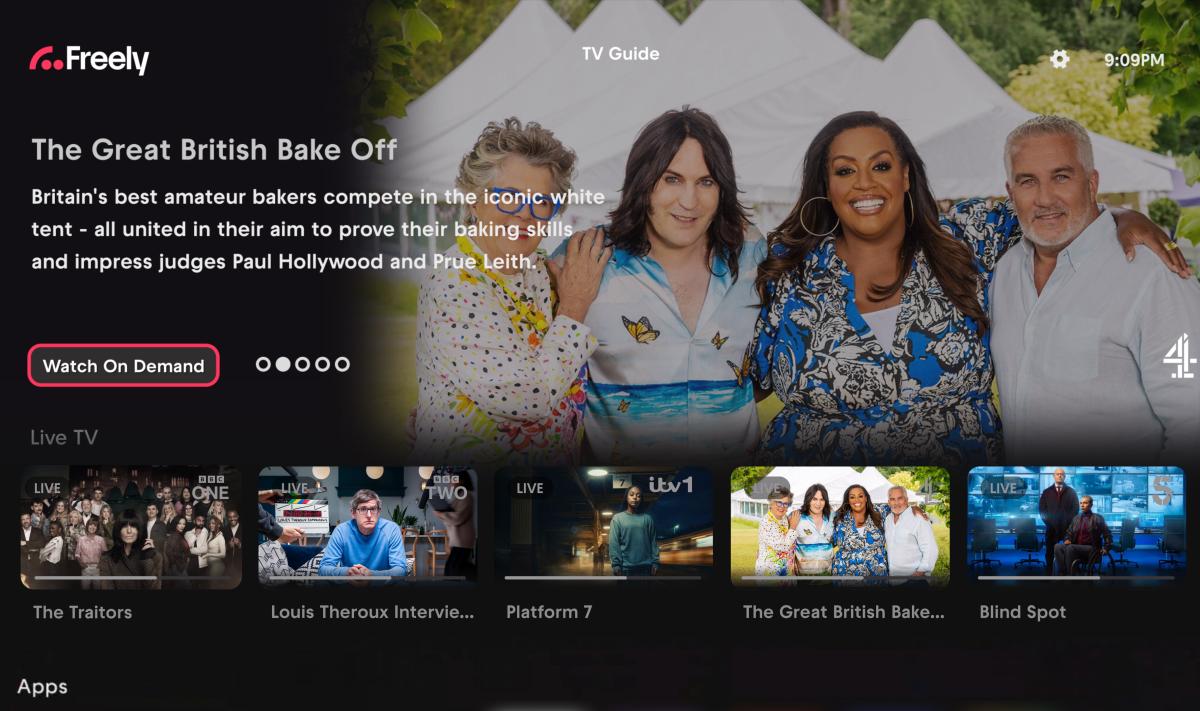With so many types of video inventory coming on to the market from a multiplicity sources, the question of what constitutes ‘premium video’ in 2013 is an interesting one. Is premium in the eye of the beholder, or are their certain properties we can identify and tie down? And who really defines what is and isn’t premium, the buyer or the seller? To find out, VAN asked various leading industry figures from both the buy-side and the sell-side to explain what they regarded as premium video.
Paul Wright, Chief Digital Officer at Omnicom Media Group, UK (Agency)
 In this diverse market many define premium video differently. The starting point for most will be content produced for broadcast and film, which sets the standard by which all other video is judged and is the default for “premium video”. In recent years professionally produced content from other media owners falls into this category, encompassing everything from Vevo to content produced by magazines and news organisations.
In this diverse market many define premium video differently. The starting point for most will be content produced for broadcast and film, which sets the standard by which all other video is judged and is the default for “premium video”. In recent years professionally produced content from other media owners falls into this category, encompassing everything from Vevo to content produced by magazines and news organisations.
User-generated content has often felt like non premium content , partly due to quality issues as well as the difficulty of defining the audience that is core to it. However, as IP delivered video becomes widely available via multiple devices, consumer audiences may well change how an advertiser will view what is defined as premium content. When users decide to view content in numbers then this presents an opportunity that can be used e.g. the SB.TV and Machinima channels on YouTube.
Equally we may also see more brands producing their own premium video content – Red Bull and Waitrose are great examples of brands making content work. Ultimately over time the definition of “premium video” content will become irrelevant. Great content engages with its audience regardless of platform, access point or screen size.
Rags Gupta, COO of Videoplaza, (Sell-Side Ad Management Platform)
 Premium content is ultimately content that garners a premium price, whether from an advertiser or consumer. This tends to be mean longer-form story-telling with higher production values, or else live events – sports and music in particular – but naturally there are always exceptions to this. Content branded ‘premium’ also tends to have higher production values and often reaches a larger audience – sometimes requiring funding in the form of a paywall or ad funding – as a result of the ‘quality’ of its nature.”
Premium content is ultimately content that garners a premium price, whether from an advertiser or consumer. This tends to be mean longer-form story-telling with higher production values, or else live events – sports and music in particular – but naturally there are always exceptions to this. Content branded ‘premium’ also tends to have higher production values and often reaches a larger audience – sometimes requiring funding in the form of a paywall or ad funding – as a result of the ‘quality’ of its nature.”
Andrew Moore, EMEA MD of SpotXchange (Video Ad Exchange)
 Premium content has two definitions: in advertising and marketing circles, “premium” is shorthand for high quality professionally produced content. For consumers, “premium content” could be defined as what consumers value and therefore what is popular. An elitist view would be that we should not confuse quality with popularity; quality content is expensive to produce and should be valued by advertisers who are prepared to pay for it. Ultimately, however defined, content is a vehicle to drive engagement and some form of emotional connection with consumers. In this context, content which does this most successfully is the content we should consider premium.
Premium content has two definitions: in advertising and marketing circles, “premium” is shorthand for high quality professionally produced content. For consumers, “premium content” could be defined as what consumers value and therefore what is popular. An elitist view would be that we should not confuse quality with popularity; quality content is expensive to produce and should be valued by advertisers who are prepared to pay for it. Ultimately, however defined, content is a vehicle to drive engagement and some form of emotional connection with consumers. In this context, content which does this most successfully is the content we should consider premium.
Farhad Massoudi, CEO of AdRise, a Connected TV Ad Network and App Development Company
 When it comes to the definition of premium video content, there are many angles to consider and it could get complicated, very quickly. I’ve seen many companies trying to expand the definition of “premium content” to what is widely available on the web. Although, that conveniently expands their pool of “premium content” in front of advertisers, it certainly doesn’t make it true; and advertisers know that. The fact that a piece of content is popular or has been professionally edited does not make it premium, period.
When it comes to the definition of premium video content, there are many angles to consider and it could get complicated, very quickly. I’ve seen many companies trying to expand the definition of “premium content” to what is widely available on the web. Although, that conveniently expands their pool of “premium content” in front of advertisers, it certainly doesn’t make it true; and advertisers know that. The fact that a piece of content is popular or has been professionally edited does not make it premium, period.
We try to keep it simple and honest. A piece of content is premium if it’s been distributed on a TV network, a major cable TV channel, or in theatres. Not only this is on par with what traditionally advertisers and content owners referred to as premium, but it also highlights the simple fact that, if a piece of content is truly “premium”, it will eventually find it’s way on one of the above mediums. In the connected TV space, we were forced to learn this lesson early on and quickly realized that long-form premium content is far more popular in a lean-back environment.
Evan Gotlib, SVP Advertising Sales & Branded Entertainment, Blip (Web Series Publisher)
 A client once told me that she defines premium video as content people are willing to spend their time watching. Time is the most precious commodity we have and when a consumer is able to devote their time and attention to a piece of video content, it means something. At Blip our average show is 12 to 14 minutes long. Our our viewers are spending over 80 minutes a month with Blip. That is premium.
A client once told me that she defines premium video as content people are willing to spend their time watching. Time is the most precious commodity we have and when a consumer is able to devote their time and attention to a piece of video content, it means something. At Blip our average show is 12 to 14 minutes long. Our our viewers are spending over 80 minutes a month with Blip. That is premium.
Jon Hewson, Rovi, Connected TV Ad Network
 Defining premium video is crucial to businesses trying to cut through the noise in a marketplace where hours of video is placed online every day.
Defining premium video is crucial to businesses trying to cut through the noise in a marketplace where hours of video is placed online every day.
Whether or not content can be considered premium often depends on two parties – the marketer and the viewer. Clearly, viewer engagement is a major factor in deciding the value of a video. Content uploaded by individuals can appear worthless to marketers but quickly go viral and gain a vast number of viewers. The nature of user generated video as a genre of constant change makes it a very difficult sector in which to assign the “premium” tag and gauge value for ad spend.
On the flip side of the coin, those with ad budget can quickly assess the value of content from a well-known source, and assign a value based on previous metrics. This creates separate area of premium content, where marketers can expect a relatively predictable level of return rather than gamble on a one-off video making the bigtime.
What is clear is that those in the industry need to rapidly nail down what their definitions of premium video in order to take advantage of the rash of content becoming available.
Ekow Yankah, CEO of Castaclip, (Video Syndication)
 When we speak about premium content, we primarily have two attributes in mind: brand safety and high production value. Whilst most people are familiar with the concept of brand safety, we classify “high production value” as the summation of a sustainable editorial concept, sound and picture production quality and finally we look at the frequency of production output.
When we speak about premium content, we primarily have two attributes in mind: brand safety and high production value. Whilst most people are familiar with the concept of brand safety, we classify “high production value” as the summation of a sustainable editorial concept, sound and picture production quality and finally we look at the frequency of production output.
 Steve Broadhead, SVP EMEA Partnerships, Viewster
Steve Broadhead, SVP EMEA Partnerships, Viewster
We see premium video as broadcast quality, long-form content which allows us to place adverts pre, mid and post the content, and as such that is the only type of content that we offer across all of the channels and devices that we support.
The delivery must be to the highest standard and a small number of highly targeted adverts should be displayed, and capped to prevent repetition. The video should be clearly visible, always above the fold, and user-initiated. Aside from improving the user experience, this will deliver better returns for the advertiser.
Users should be rewarded with premium content for watching ads. It’s our policy to deliver a single advert per break, every 10 minutes or so, which provides a strong experience for consumers and advertisers. While short-form content has value, it should justify watching a 30 second advert, and should not be user generated. If it doesn’t live up to expectations or if the user has to repeatedly watch adverts, it could become very tiring.
Overall, the standard of video content can be argued but when you have broadcast quality, long form, click to play, above the fold, low frequency of adverts you’re not going far wrong.
Have a Summary of the Latest Industry News Delivered Weekly to Your Inbox




